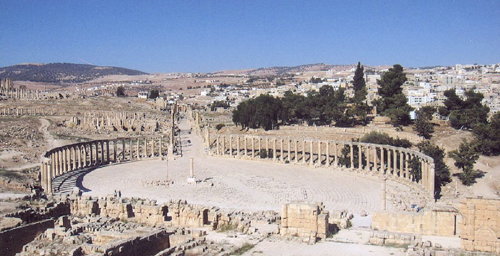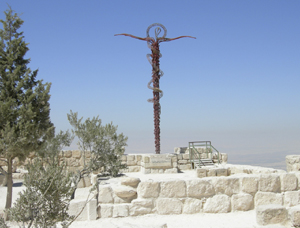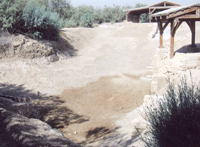Many who know what I do for a living have asked me from time to time if I have ever visited the “holy land,” and my typical response is, “Yes, in fact I have made three visits to Israel during my years on the staff of The Baptist Courier.”
 The ruins of the ancient Roman city of Gerasa in northern Jordan, one of the Decapolis cities mentioned in the Bible, are being excavated.
The ruins of the ancient Roman city of Gerasa in northern Jordan, one of the Decapolis cities mentioned in the Bible, are being excavated.For Southern Baptists, and probably for most Christians, the name Israel is synonymous with the the terms “holy land” or “Land of the Bible.” From Sept. 22-Oct. 1, however, I joined nine other editors of Southern Baptist newspapers for a tour of what sometimes is described as “the rest of the Bible land,” which is home to religious sites considered no less holy by the officials of that country, Jordan.
The country of Jordan, officially the Hashemite Kingdom, has been an object of interest by Southern Baptists for years, and in the Nov. 2 edition of the Courier I wrote about Baptist work in that area of the Middle East – an effort of ministry described by those who have been involved in it as “an incredible success story.”
If interest in, and concern for, Jordan is stimulated by the success of Christians in a Muslim country, students of, and believers in, the Bible have adequate reasons to be fascinated with a country where so many biblical events took place.
 A serpentine cross stands at the top of Mt. Nebo, marking the spot where Moses may have viewed the promised land.
A serpentine cross stands at the top of Mt. Nebo, marking the spot where Moses may have viewed the promised land.For instance, seven of the 10 cities that made up the Decapolis in the scriptures were located in Jordan. Jesus visited the “region of the Gadarenes,” as told in Matthew 8:28-34 – where Jesus cast out the demons from two men living in a cemetery, placing the demons in a herd of pigs who “plunged down the steep hillside into the lake and drowned in the water.”
Old Testament sites such as the Jabbok River, north of the capital city of Amman – where Jacob wrestled with an angel, coming away with a limp and a new name, Israel – is in Jordan. So, too, are the lands of Moab and Edom, and the spot where, according to tradition, the prophet Elijah was taken into heaven is on the eastern shore of the Jordan River valley. Jordan also is home to Mt. Nebo, where Moses was allowed to glimpse, but not permitted to enter, the promise land.
 Ancient marble steps descend to the spot where an increasing number of archaeologists believe Jesus was baptized. Two churches have been discovered at this probable site of the baptism of Jesus. Visible at right are the foundations of a cross-shaped shelter for those who were being baptized by the churches.
Ancient marble steps descend to the spot where an increasing number of archaeologists believe Jesus was baptized. Two churches have been discovered at this probable site of the baptism of Jesus. Visible at right are the foundations of a cross-shaped shelter for those who were being baptized by the churches.Perhaps of greatest interest to Christians is the site of the baptism of Jesus by John the Baptist, which archaeological evidence indicates was in Jordan, on the eastern side of the Jordan River. These findings rule out the setting just south of the Sea of Galilee in favor of a place directly east of the Jordan River, nearer Jerusalem – and in the country of Jordan.
John’s gospel tells of John baptizing at Bethany beyond the Jordan (John 1:10), and also of Jesus leaving Jerusalem and going “beyond the Jordan River near the place where John was first baptizing and stayed there awhile” (John 10:40).
John preached and baptized in the Judean wilderness, according to Matthew’s gospel – and that wilderness lies east of Jerusalem and does not extend north to the Sea of Galilee.
The Royal Archaeological Society of Jordan has been excavating the site on the eastern shore of the Jordan River for nearly a decade, and there is growing general agreement that the place where Jesus was baptized now has been found – recalling a sacred event that Ruston Mkhjian, assistant director of the Baptism Site Commission, referred to as “the sunrise of Christianity.”